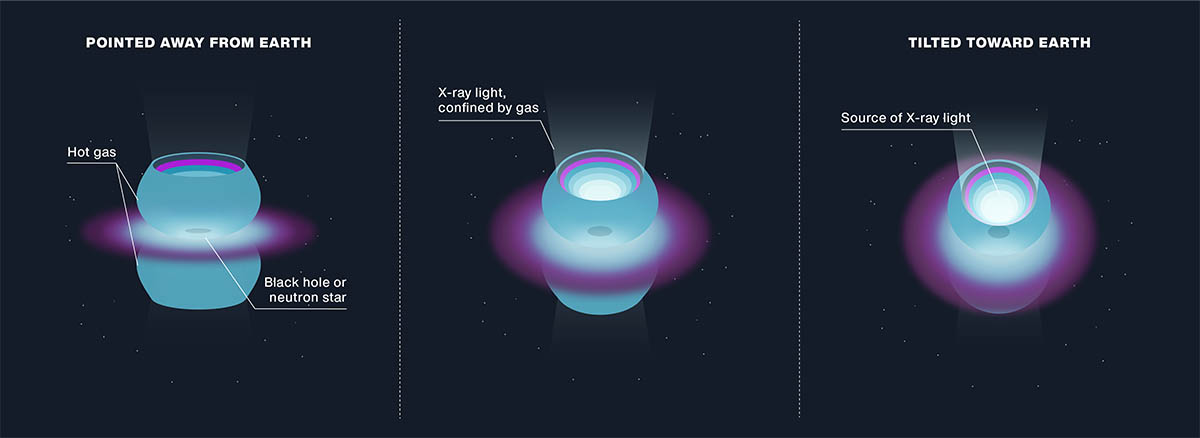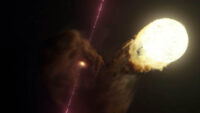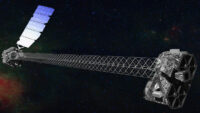The cosmic object SS 433 contains a bright source of X-ray light surrounded by two hemispheres of hot gas. The gas corrals the light into beams pointing in opposite directions away from the source. SS 433 tilts periodically, causing one X-ray beam to point toward Earth. (NASA/JPL-Caltech)
Home The cosmic object SS 433 contains a bright source of X-ray light surrounded by two hemispheres of hot gas. The gas corrals the light into beams pointing in opposite directions away from the source. SS 433 tilts periodically, causing one X-ray beam to point toward Earth. (NASA/JPL-Caltech) The cosmic object SS 433 contains a bright source of X-ray light surrounded by two hemispheres of hot gas. The gas corrals the light into beams pointing in opposite directions away from the source. SS 433 tilts periodically, causing one X-ray beam to point toward Earth. (NASA/JPL-Caltech)




